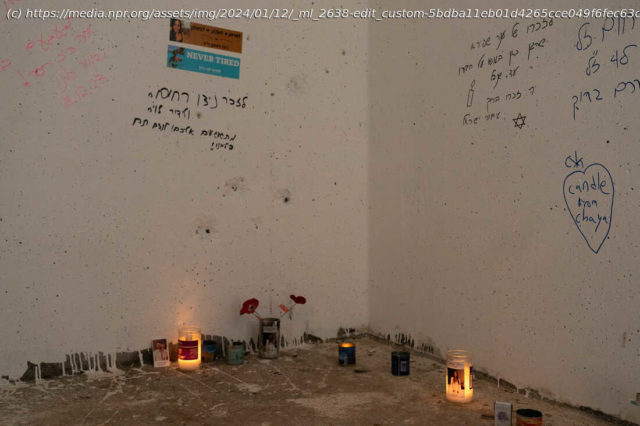Israel claims some achievements in more than three months of fighting since Hamas’ Oct. 7 attack, but the Palestinian death toll has soared and the militant group still clings to power in Gaza.
In the 100 days since Oct. 7, the day that fighters from the militant group Hamas burst across Israel’s southern border, Israeli officials have vowed not to stop fighting until Hamas has been destroyed.
The attackers killed 1,200 people and took about 240 individuals hostage, according to Israel — shaking the country’s sense of security to its core. Israel’s military response, with an air, ground and sea assault on Gaza, has killed more than 23,900 Palestinians, health officials in Gaza say, and has left much of the territory in ruins.
In more than three months of war, there are some signs that Israel has made progress toward reaching its stated goals. Its military says it has killed Hamas officials and thousands of fighters. It has seized and destroyed Hamas military infrastructure, including rocket launchers, operations centers and a lot of its underground tunnel network.
But on other counts, military analysts say, Israel has failed to accomplish what it set out to do. It has not yet captured or killed Hamas leaders like Yahya Sinwar, the group’s top official in Gaza. It has been unable to secure the release of more than 100 hostages still alive in captivity. And the civilian death toll in Gaza has brought Israel broad international criticism and pressure, including from the Biden administration.
Analysts warn that the war could get even more dangerous for the people of Gaza, even as concerns grow about risks that the war could spill over into a wider regional conflict with other countries.
Without a clear exit strategy, Israel’s «broader strategic goal» — the eradication of Hamas — may be impossible to achieve, said Dan Byman, a senior fellow at the Center for Strategic and International Studies.
Its success «will depend in part on destroying Hamas’ military force, but also in part on ensuring that whatever [leadership in Gaza] comes in next has some legitimacy, has some ability to function,» he said.Israel has set out to dismantle Hamas’ military infrastructure
A lot of Israel’s military attention and public comments have focused on the vast network of tunnels snaking under Gaza that Israeli military officials have dubbed «the Metro.»
Israel estimates the passageways and shafts run as many as 300 miles through the enclave. Since Israeli ground troops secured the area around Erez, the border crossing from north Gaza into Israel, military officials have frequently shown off their biggest «Metro» trophy, claiming it to be the largest and most complex tunnel Hamas built.
On a day in late December, Israeli military spokesperson Maj. Doron Spielman led a dozen journalists through a section of what was once the concrete barrier that separated Israel and Gaza. It was blown out by Hamas fighters on Oct. 7, making it possible to step directly onto Gaza’s sandy soil, as drones buzzed overhead.
What seemed to be a rusty drainage pipe jutting out of a sand dune was, in fact, the opening of Hamas’ largest «single subway tunnel,» Spielman said.
Just a few hundred feet from the border crossing, an initial steep climb down rickety metal grates led to a large concrete tunnel, complete with wiring and ventilation, that snaked past two armed soldiers and disappeared into the dark.






